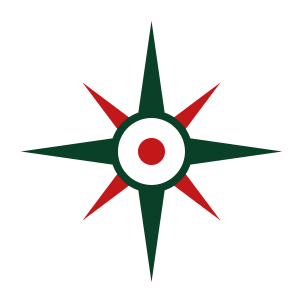Polar water operational manual
The Polar Water Operational Manual is a ship specific document that explains how to operate the ship in polar waters.
An experienced Master Mariner with Polar Advanced certification from RBG can help you make the right choices by understanding the challenges of a Polar Water Operational Manual, educating you and your employees, combined with an in-depth knowledge of the regulatory and commercial issues that may affect the implementation of practical solutions. As part of your team, we work together on solutions that we also realize together.
Polar Water Operational Manual (PWOM) required for ships operation in polar waters
On January 1, 2017, the IMO Polar Code came into force. This regulation requires ships operating in polar waters to submit a Polar Water Operational Manual (PWOM) in order to obtain a Polar Ship Certificate. We believe that the way a ship is operated in polar waters, and especially in ice, is a critical aspect of safe operations. The quality of the PWOM will affect safe business operations. Annex II of the Polar Code provides a model PWOM. The purpose of the Polar Water Operational Manual is to inform the captain and crew of the ship’s capabilities, limitations and essential procedures in polar waters. It is intended to make correct operational decisions and actions to protect the ship, crew and passengers and the polar environment. The procedures cover operations under both normal and emergency conditions in polar waters.
Recognize risks using the Polar Water Operational Manual
Ships operating in polar regions are exposed to a number of unique risks. For example, frequent bad weather conditions, extended periods of day- and night-time, lack of availability of maps with up-to-date information, limitations of communication systems and navigation aids. But especially the extremely low temperatures can negatively affect the effectiveness of the ship’s equipment such as winches, rescue equipment and navigation equipment, and limit the crew in their safe working environment. In addition, sea ice can put critical stress on the hull and propulsion system and the remoteness of some areas can also make rescue or SAR operations difficult and costly. The Polar Water Operational Manual should describe these issues and help the crew to recognize the risks.
Support in developing a Polar Water Operational Manual
Good preparation is required for a Polar Water Operational Manual and the documentation and calculations necessary for its validation. Before developing a Polar Water Operational Manual, we help the shipping company or operator identify the specific requirements of the relevant flag and/or class organization. This knowledge extends to the level of detail of drawings, plans, manuals and documentation, as well as knowledge of requirements for the approval of the Polar Code Operational Assessment and the PWOM. The Polar Water Operational Manual covers a wide range of topics from technical system details to monitoring procedures and contingency and planning. As such, the Polar Water Operational Manual is also an amalgamation of owner/operator procedures and other information as defined in ISM and ISO standards.
Vessel Risk Assessment Tool from RBG
The Polar Water Operational Manual should record how decisions are made whether the ice conditions exceed the ship’s design limits, taking into account the operational limitations on the Polar Ship Certificate. An appropriate decision support system, such as the Vessel Risk Assessment Tool (VRAT), developed by RBG, can be used. RBG’s Vessel Risk Assessment Tool is an innovative tool that allows crews to conduct risk assessments before sailing in ice or ice-free polar regions. For ships operating only in ice-free waters, procedures should be established to ensure that the ship does not come into contact with ice.
The Polar Water Operational Manual from Rood Boven Groen offers you suitable solutions for all types of ships and the optimal combination of knowledge, level and empathy. In most cases, it is better to hire a professional with in-depth knowledge and experience than to spend hours figuring out the “how” and producing a half-knowledge product. This type of short-term problem solving often results in duplication of work and extra unnecessary costs. The demands we place on ourselves in every assignment are permanent intensive preparation, constant vigilance and high concentration from start to finish.
We stand for short-term help and long-term success! Feel free to contact us for further information. Our ISM News Update contains the latest important developments. You can register here.



